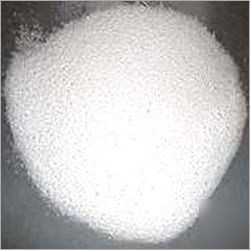Wisconsin Parts Database Instructions and Discussion Team/Group > OTHER STATES
> Electrical Components
> Add
> New
> Without Warranty
> Potassium carbonate (K2CO3) drying agent 4 lbs
Potassium carbonate (K2CO3) drying agent 4 lbs
Potassium carbonate (K2CO3) is a white salt, soluble in water (insoluble in alcohol), which forms a strongly alkaline solution. It can be made as the product of potassium hydroxide's absorbent reaction with carbon dioxide. It is deliquescent, often appearing a damp or wet solid. Potassium carbonate is used in the production of soap and glass.
Potassium carbonate was first identified in 1742 by Antonio Campanella and is the primary component of potash and the more refined pearlash or salts of tartar. Historically pearlash was created by baking potash in a kiln to remove impurities. The fine white powder remaining was the pearlash. The first patent issued by the U.S. Patent Office was awarded to Samuel Hopkins in 1790 for an improved method of making potash and pearlash.
In late 18th century North America, before the development of baking powder, pearl ash was used as a leavening agent in "quick breads".[1]
Today potassium carbonate is prepared commercially by the electrolysis of potassium chloride. The resulting potassium hydroxide is then carbonated using carbon dioxide to form potassium carbonate, which is often used to produce other potassium compounds.
2KOH + CO2 K2CO3 + H2O
Pearl ash has been used for soap, glass, and china production.
Pearlash added to hard water will soften the water.[2]
In the laboratory, it may be used as a mild drying agent where other drying agents such as calcium chloride and magnesium sulfate may be incompatible. However, it is not suitable for acidic compounds, but can be useful for drying an organic phase if one has a small amount of acidic impurity.
Mixed with water it causes an exothermic reaction.
It is mixed with distilled water to make a safer electrolyte for oxyhydrogen production than potassium hydroxide, the more commonly used electrolyte.
In cuisine, it is used as an ingredient in the production of grass jelly, a food consumed in Chinese and Southeast Asian cuisines.
Potassium carbonate is being used as the electrolyte in many cold fusion experiments.
Potassium carbonate is sometimes used as a buffering agent in the production of mead or wine.
Aqueous potassium carbonate is also used as a fire suppressant in extinguishing deep fat fryers and various other B class related fires.
Potassium carbonate is used in reactions to maintain anhydrous conditions without reacting with the reactants and product formed.[citation needed] It may also be used to pre-dry some ketones, alcohols, and amines prior to distillation.[3]
an ingredient is welding fluxes, and in the flux coating on arc welding rods

